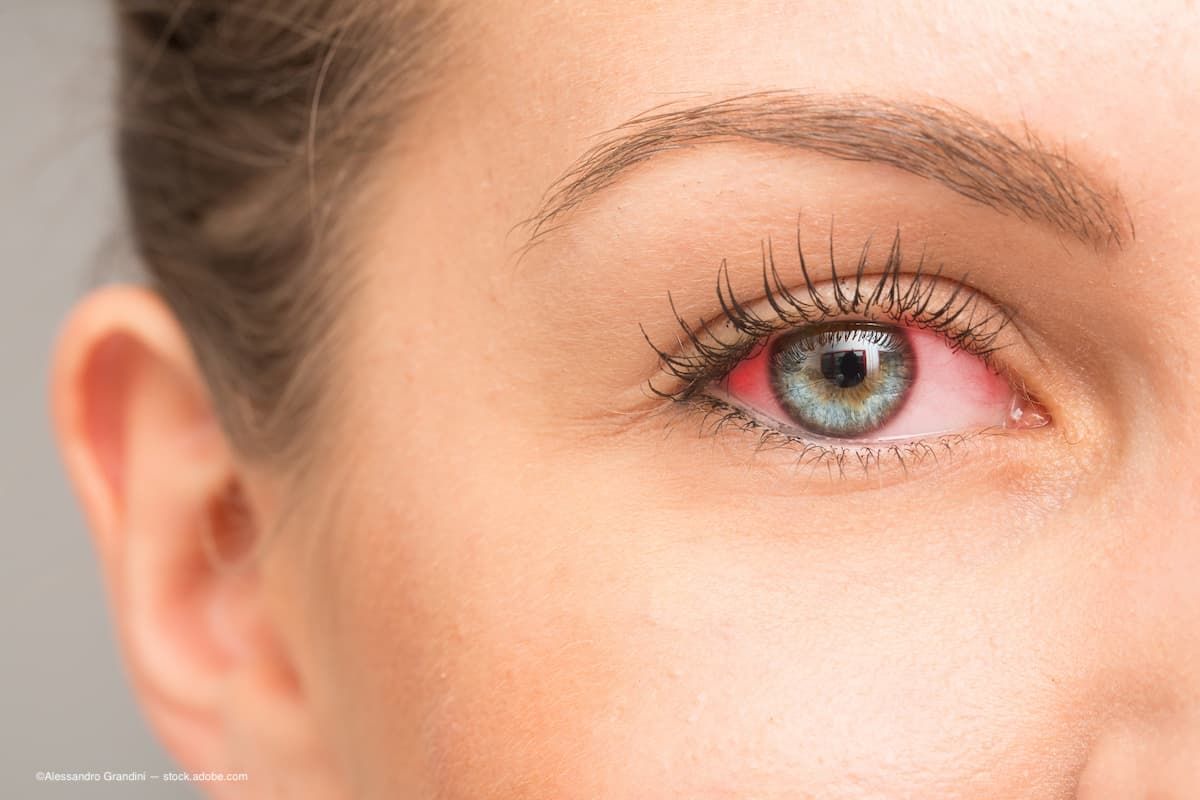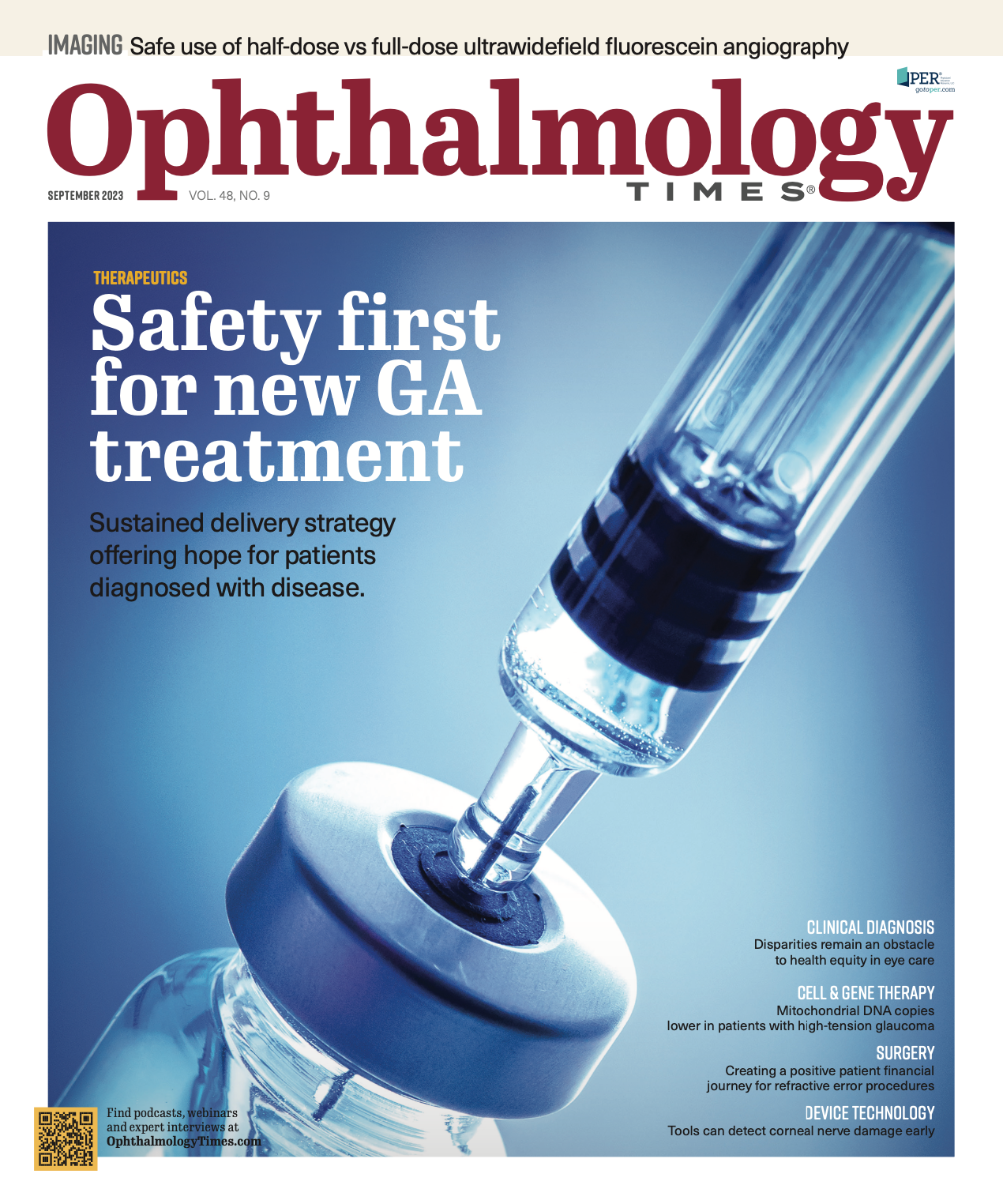News
Article
Digital Edition
Enhancing surgical outcomes through effective dry eye disease management
Author(s):
Clinicians must screen, diagnose, and manage for effective treatment.
(Image Credit: AdobeStock/Alessandro Grandini)

Reviewed by Selina McGee, OD, FAAO
Achieving the best vision possible by managing existing dry eye disease can be tricky. Selina McGee, OD, FAAO, from BeSpoke Vision in Edmond, Oklahoma, walked clinicians through how she handles these cases with a discussion of 2 patients.
Case 1
McGee detailed a case in which a man aged 78 years presented with difficulty adjusting to different light levels in both eyes. The patient, retired and an avid photographer, uses a monovision contact lens in the left eye.
The ocular history included mild macular drusen in both eyes for which he used the AREDS 2 (Bausch + Lomb) vitamin formulation. The examination showed full ocular range of motion with no restrictions, no afferent pupillary defect, unremarkable visual fields, IOPs in the midteens, and right eye positivity for matrix metalloproteinase-9 based on the results of the InflammaDry test (Quidel). The binocular visual acuities (VAs) were 20/25 and 20/20-1 at near. Collarettes were present in the lids and lashes. The bulbar/palpebral conjunctiva were white and quiet. The anterior chamber was deep and quiet, and the iris was normal.
The examination showed meibomian glands that were nonfunctional; the osmolarity values were 314 and 310. He had nuclear sclerotic cataracts in both eyes, grades +2-3.
Based on the assessment, the patient needed optimization of the ocular surface before the cataract surgeries could be scheduled. The patient desired minimal dependence on spectacles and contact lenses.
McGee’s plan started by addressing the dry eye using an immunomodulator, steroid pulse, and varenicline (Chantix; Pfizer) twice daily with a lid cleanser. McGee set the cataract consultation and discussing the IOL options; the recommendation was implantation of the Light Adjustable Lens (RxSight).
Preoperative follow-up visit
The examination showed that the ocular surface had improved. The VAs in the right and left eyes, respectively, were 20/30 and 20/200. The collarettes also improved, and the bulbar/palpebral conjunctiva were white and quiet. The osmolarity values were 308 and 302. When the InflammaDry test was repeated, both eyes were negative.
The superficial punctate keratitis resolved in both eyes; the tear breakup times (TBUTs) were 9 and 7 seconds; and the tear meniscus heights were 0.25 and 0.28 mm. The cataract surgery was scheduled.
Case 2
In this case, a man aged 76 years was referred by a glaucoma surgeon for a dry eye consultation. The patient’s complains were burning; itching; dryness; and painful, red, gritty, and watery eyes that had worsened over 2 months. He had glaucoma in both eyes and superficial punctate blepharitis.
At the time of the examination, the patient was taking cyclosporine twice daily, instilling Oasis TEARS (Oasis Medical), using brimonidine tartrate/timolol maleate ophthalmic solution 0.2%/0.5% twice daily, and instilling Lumigan (bimatoprost 0.01%; Allergan) every night at bedtime in both eyes.
The bilateral VA was 20/20-1 and the same for near vision in both eyes. He had collarettes with severe telangiectasia in both eyes. The bulbar/palpebral conjunctiva showed +3 injection bilaterally. He had superficial punctate keratitis inferiorly in both eyes; the TBUTs were 2 and 3 seconds and the tear meniscus heights were 0.34 and 0.25 mm.
The osmolarity values were 337 and 339. The InflammaDry test was positive in both eyes. The IOPs were 6 and 15 mm Hg.
Patient assessment
The patient was diagnosed with keratoconjunctivitis sicca, ocular rosacea, meibomian gland disease, and Demodex blepharitis. The plan for this patient was to continue the immunomodulator, add varenicline twice daily with a lid cleanser, and begin intense pulsed light (IPL) treatment with a deep lid office treatment. The patient was scheduled to return in 2 weeks for a second IPL treatment.
Follow-up examination
The osmolarity values decreased to 302 and 292. The InflammaDry test was negative in both eyes. The collarettes improved and the bulbar/palpebral conjunctive showed trace injection. The superficial punctate keratitis resolved in both eyes; the TBUTs were 10.2 and 10 seconds; and the tear meniscus heights were 0.20 and 0.24 mm.
Takeaways from both cases
“Dry eye disease affects every facet of our practices—ie, refraction, contact lenses, refractive surgery, cataract surgery, and aesthetic surgery,” McGee explained.
Moreover, McGee added that clinicians must screen, diagnose, and manage: “Clinicians should ask themselves the following questions: what’s your lid and lash strategy, the ocular surface optimization strategy, and the dry eye disease treatment algorithm?”

Selina McGee, OD, FAAO
E: drmcgee@bespokevision.org
McGee is from BeSpoke Vision in Edmond, Oklahoma.

Newsletter
Don’t miss out—get Ophthalmology Times updates on the latest clinical advancements and expert interviews, straight to your inbox.




